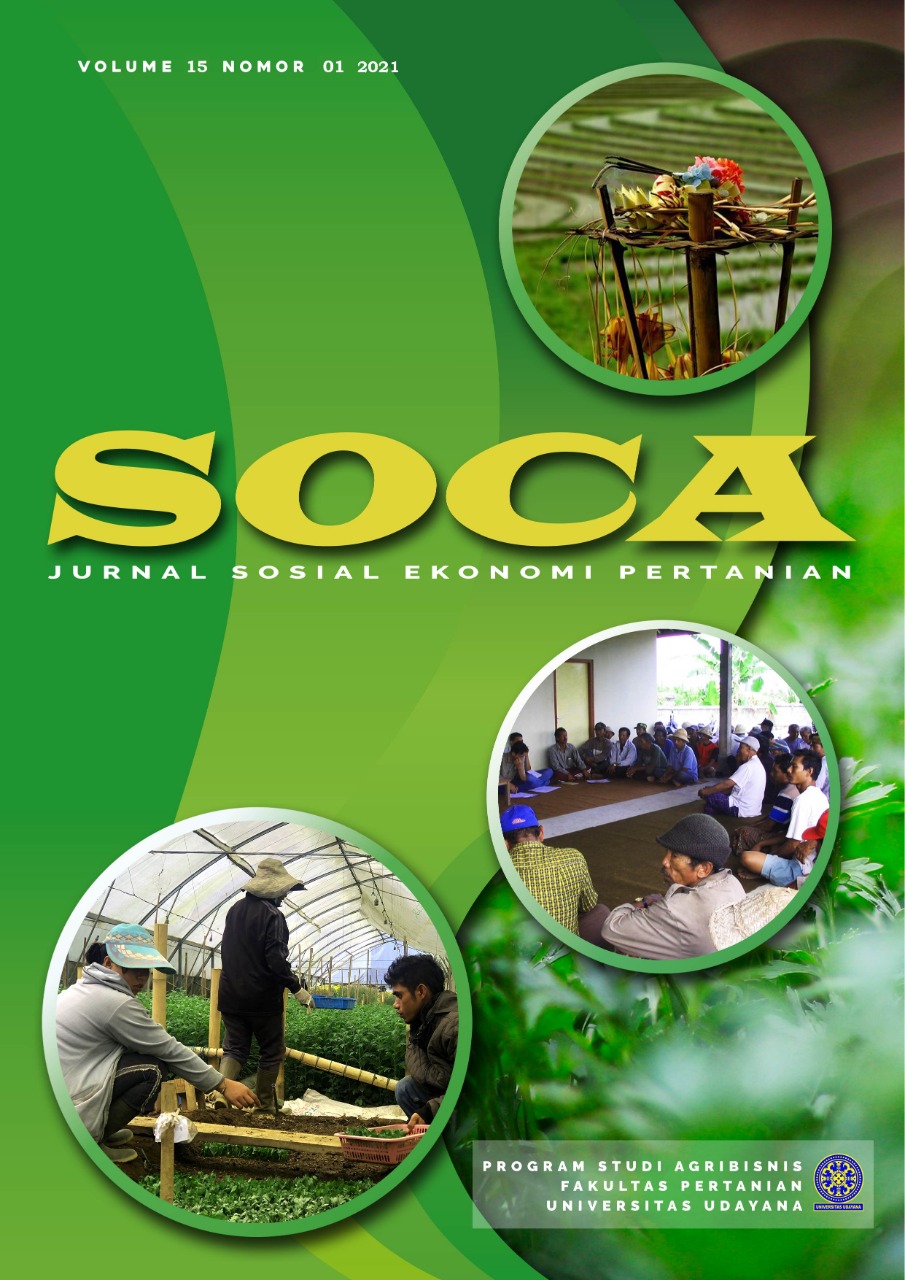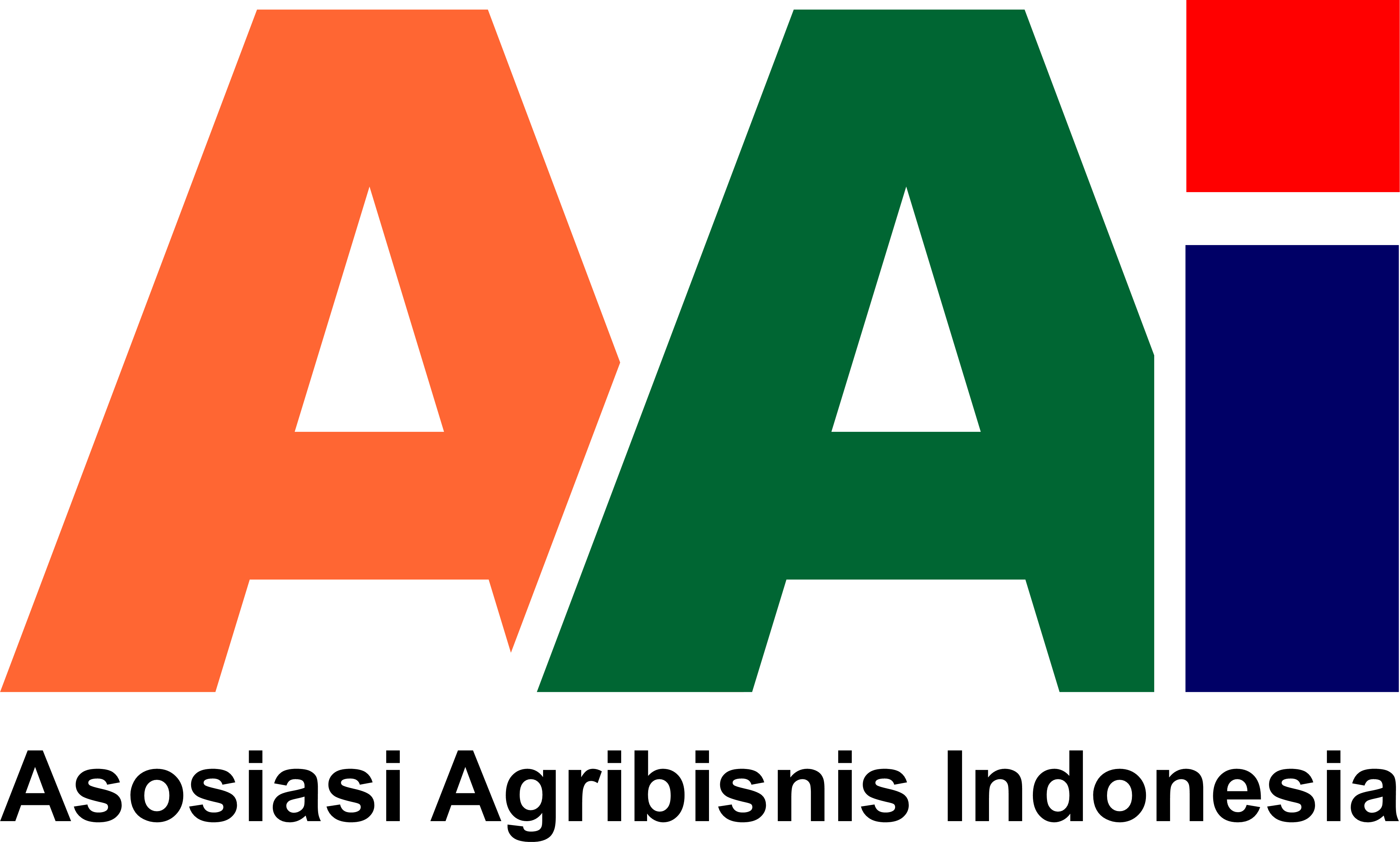Demand and Willingness to Pay for Rice Commodities In West Java
Abstract
Rice is the staple food of Indonesian people. In West Java, the price of rice in 2019 in the turn of the month increases gradually, therefore, more attention is needed regarding rice price stabilization. Price stabilization is an important dimension in contributing to social welfare stabilization. This study aimed to determine the factors that influence rice demand and consumers' willingness to pay for rice (Willingness to Pay) in West Java. The basic methods of this research were descriptive and analytical methods. The method of taking location was purposive and sampling was done by convenience sampling technique. Types of data and data sources were primary data and secondary data. Data collection techniques by interview, observation and recording. Data analysis methods used included: (1) Descriptive Analysis Method; (2) Analysis of factors that influence demand by using Seemingly Unrelated Regression (SUR); (3) Willingness to Pay (WTP). The results showed that the price of rice had a positive effect on rice expenditure, yet had a negative effect on rice demand. While the number of family members has a positive effect on rice demand. Calculation of value (WTP) obtained Gross WTP value of IDR 4,315,638.26. The amount to be paid is IDR 243,635.85, the Net WTP value is IDR 4,072,002.41. When prices increase by 10%. then the welfare level decreased by -67.89%. Meanwhile, when prices fell by 10%, the welfare level increased by 61.10%.
Downloads
References
BPS. (2018a). Statistik Ketahanan Pangan. Indonesia: Badan Pusat Statistik.
BPS. (2018b). Survei Komoditi Pangan Pokok Nasional. Jawa Barat: Badan Pusat Statistik.
BPS. (2019a). Statistik Indonesia 2019. Jakarta: Badan Pusat Statistik.
BPS. (2019b). Survei Komoditi Pangan Jawa Barat. Bandung.
Deviana, I., Kusrini, N., & Suyatno, A. (2014). Analisis Permintaan Rumah Tangga terhadap Beras Produksi Kabupaten Kubu Raya. 3, 248–249.
Foster, J., & Sen, A. (1997). On Economics Inequality. United Sate: Oxford University Press Inc.
Khudori. (2008). Ironi Negeri Beras. Yogyakarta: INSISTPress.
Marpaung, R. (2013). Kemauan Membayar dan Surplus Konsumen untuk Kemudahan Layanan Air Bersih pada Masyarakat Kembangbahu Menggunakan Contingent Valuation Method ( Studi Kasus Dampak Kekeringan Pada Ketersediaan Air Bersih ) Willingness to Pay and Consumer Surplus for Conveni. 149–161.
Pearce, D., & Turner, R. (1990). Economics of Natural Resources and The Environment. Harvest Wheatsheaf.
Putri, A., & Sukadana, I. (2019). Elastisitas Permintaan Komoditas Strategis di Indonesia. E-Jurnal EP Unud, 8(7), 1502–1539.
Ramadanus, Tarumun, S., & Elinur. (2013). Faktor-Faktor yang Mempengaruhi Konsumsi Pangan Sumber Karbohidrat di Provinsi Sumatera Barat. Jurnal Dinamika Pertanian, XXVIII(2), 121–130.
Ratih, P., Ayu, I., Sudarta, W., & Ustriyana, I. (2013). Persepsi Konsumen terhadap Beras Organik dan Anorganik di Toko Satvika Boga Sanur Denpasar. Jurnal Ilmiah Agribisnis, 2(2), 2301–6523.
Sanny, L. (2010). Analisis Produksi Beras di Indonesia. Binus Business Review, 1(1), 245. https://doi.org/10.21512/bbr.v1i1.1072
Sekaran, U. (2006). Research Methods For Business (Metode Penelitian untuk Bisnis). Edisi empat buku 1. Yogyakarta: Salemba Empat.
Siswanto, E., Bonar, M., & Harianto. (2018). The Impact of Rice Policy on Rice Market and The Welfare of Rice Producers and Consumers in Indonesia. Jurnal Ilmu Pertanian Indonesia, 23(2), 93–100. https://doi.org/10.18343/jipi.23.2.93
Sriwaranun, Y., Gan, C., Lee, M., & Cohen, D. (2014). Consumers’ Willingness to Pay for Organic Product in Thailand. International J. of Social Economics, 42(5), 480–510.
Sugiyanto, C. (2006). Permintaan Beras Di Indonesia: Revisited. Jurnal Ekonomi & Bisnis Indonesia (Fakultas Ekonomi Dan Bisnis Universitas Gadjah Mada), 21(2), 138–155. https://doi.org/10.22146/jieb.6501
Sumarwan. (2002). Perilaku Konsumen: Teori dan Penenrapannya dalam Pemasaran. Bogor: PT. Ghalia Indonesia.
Timmer, C. P. (1992). Agricultural and The State: Growth, Employment and Proverty in Developing Countries. Ithaca: Cornell University Press.
Timmer, C. P. (1996). Does bulog stabilise rice prices in Indonesia? Should it try? In Bulletin of Indonesian Economic Studies (Vol. 32). https://doi.org/10.1080/00074919612331336938
Wadi, H., & Gede, B. (2013). Hubungan Variabel Demografi dengan Respon Konsumen terhadap Iklan Merk Top Coffe di Kota Denpasar. Jurnal Ekonomi, 2(9), 1036–1052.
Zellner, A. (1962). An Efficient Method of Estimating Seemingly Unrelated Regressions and Tests for Aggregation Bias. Journal of the American Statistical Association, 57(298), 348. https://doi.org/10.2307/2281644













